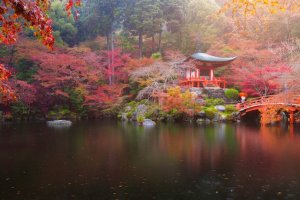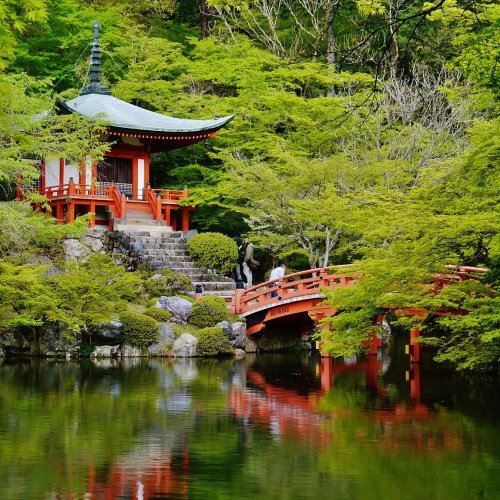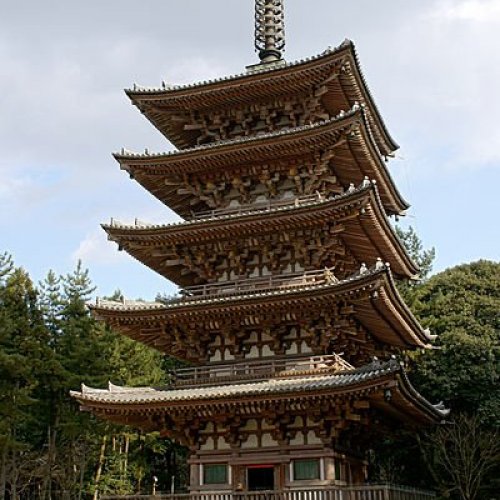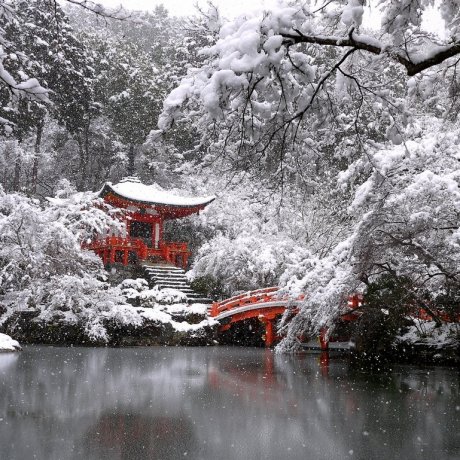 14
14
Daigo-ji Temple

Founded in 874, Daigo-ji Temple is one of Kyoto's most scenic religious sites. The hillside temple grounds make it a prime spot for cherry blossom and fall foliage, and its traditional buildings add to the rustic charm of the landscape. The main temple grounds are located is at the foot of the mountain and is connected to several other temple buildings around the summit via a hiking trail.
The Daigo-ji also plays an important role in the Shingon sect of Japanese Buddhism. Its main buildings are home to dozens of valuable cultural artifacts, which has resulted in the Daigo-ji Temple being named a World Heritage Site by UNESCO. The main area of the temple is home to the Reihokan Museum, which preserves and exhibits the temple's vast collection of historical documents and art objects, including statues and paintings.
Overview
Address
22 Daigo-Higash-oji-cho, Fushimi-ku, Kyoto City (Map) (Directions)Hours
9:00 - 16:30 Open NowOpening Hours
Website
Highlights
Sanboin
Sanboin Temple is perhaps most well-known for being the building that Toyotomi Hideyoshi helped reconstruct back in 1598. It was the main building on the temple grounds, used to host the feudal archbishops back in the past. Sanboin’s exquisite Japanese garden is a prime example of Momoyama-period architecture. The building itself also hosts multiple National Treasures and Important Cultural Assets.
Pagoda
Constructed in the year 951, Goju-no-to is one of Kyoto’s oldest national treasures. The pagoda is also revered for being the oldest building that remained after the Onin War in the 1400s. It was originally built by Emperor Suzaku, the oldest son of Emperor Daigo, to serve as a resting place for Emperor Daigo’s soul.
Weeping Cherry
Daigo-ji is one of the best places in Kyoto to view the cherry blossoms, much like how Toyotomi Hideyoshi did back in the 16th century. Approximately 1,000 cherry blossom trees were planted across the temple grounds, with the most impressive being the weeping cherry tree standing outside the Reihokan Museum. It was said that Toyotomi Hideyoshi planted 700 of these trees in order to host his famous hanami party and procession, in which a similar event is now held annually to commemorate and honor his contributions.
General Amenities
- Information Counter
- Prayer rooms
What's unique
- UNESCO World Heritage Site
Access
10-minute walk from Daigo Station on the Tozai Subway Line
Keihan Express Bus to “Daigo -ji” bus stop(from JR Kyoto Station, Hachijoguchi Bus Stop) or to “Daigo -ji mae” bus stop (from JR Yamashina Station and Rokujizo Station on the Keihan Railway)
Related Articles
 14
14
 14
14
Autumn at Daigo Temple
Cathy CawoodRed and yellow leaves enhance the beauty of World Heritage Site Daigoji, which has has the oldest pagoda in Kyoto, and many other..

Daigoji Temple in Kyoto
Peter SidellDaigoji (醍醐寺) is a Buddhist temple found in an attractive forest setting in the ancient capital of Kyoto. An exquisite trad..
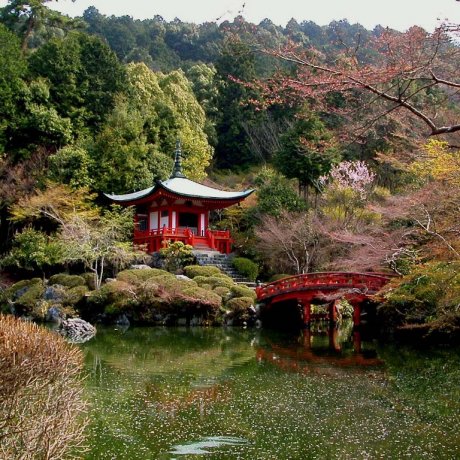 12
12
Spring at Daigoji
Cathy CawoodWorld Heritage temple Daigoji in Kyoto has a reputation for beautiful cherry blossoms in spring, and there are many cherry trees..
 7
7
Autumn Leaves of Daigo-ji Temple
Takako SakamotoDaigo-ji Temple is one of the famous spots for cherry blossom viewing in Kyoto, but also has a reputation for beautiful autumn leaves...
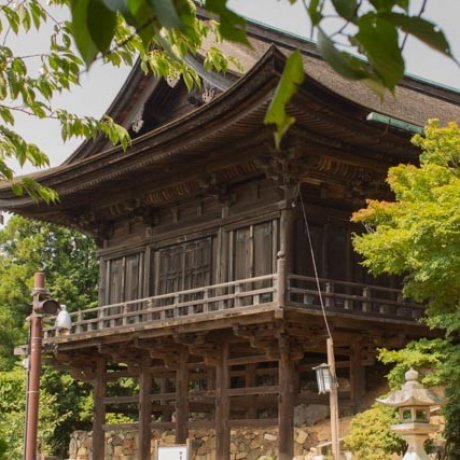 13
13
Climbing Kami-Daigo in Kyoto
Hugo KempeneerAlong the trail of Kami-Daigo in Kyoto are several World Heritage buildings and at the top is famous Nyoirindo, built in the Momoyama..
Reviews
Near Daigo-ji Temple

Guesthouse Usagi-Momiji in Kyoto
Ladies Inn Guesthouse Usagi-Momiji: by far the best accommodation I have ever found in Kyoto

Hyatt Regency Kyoto
The trees and the gardens in Kyoto have been there for hundreds of years. When I am looking at the burrowed view of the mountains..
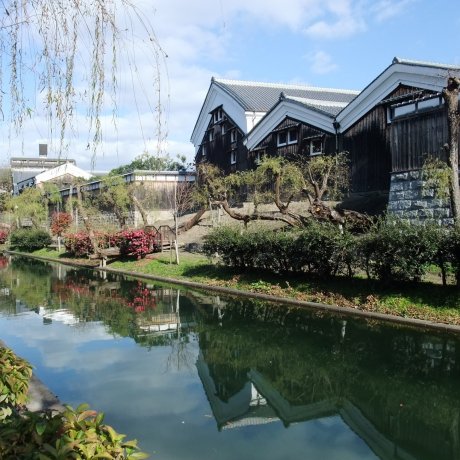 8
8
Searching for Ryoma at Teradaya Inn
This is the place where Ryoma Sakamoto was attacked by authorities. His wife Oryo saved him by running naked from the bath to inform..
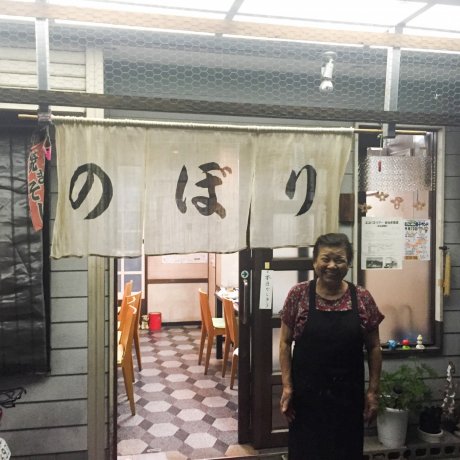
Nobori Okonomiyaki Restaurant
Visiting the Kansai region and wanting to try one of the signature dishes of Western Japan, “Okonomiyaki?” Or, have you alread..

Torikizoku in Fushimi
Torikizoku is a popular and affordable yakitori chain store in Japan. What is yakitori? Yakitori is grilled chicken served on ..
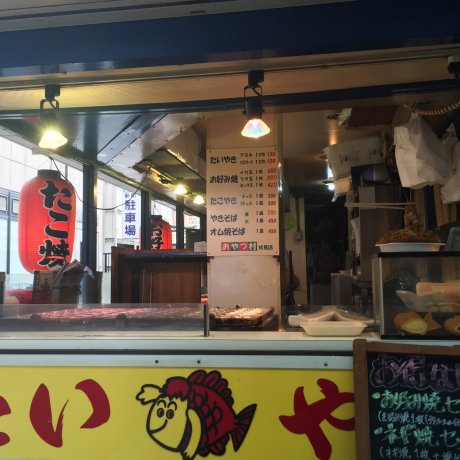
Oyatsumura Street Food
The popular Japanese cakes shaped like small fish are called "taiyaki" which translates directly to "baked seam bream. At this small..
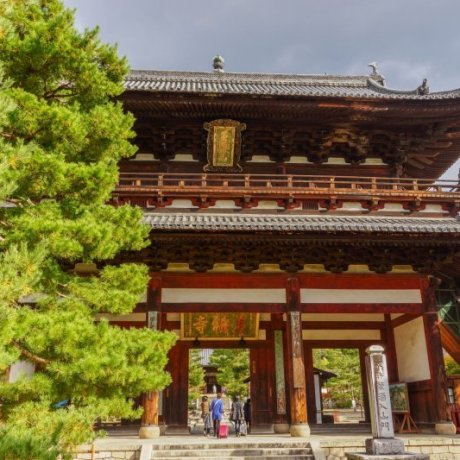
Obakusan Mampukuji Temple
Ōbaku-san Manpuku-ji is a temple located in Uji, Kyoto. It is the head temple of the Japanese Ōbaku Zen sect, named after Wanfu Temple in Fujian, Ch..

Fushimi Inari Taisha
Fushimi Inari, officially known as Fushimi Inari Taisha, is a beautiful Shinto shrine in southern Kyoto, famous for its thousands of vermilion torii...

Tofukuji Temple
Tofukuji temple (東福寺), particularly known for its autumn leaves, was founded in 1236 and is the head temple of the Tofukuji School of the Rinzai ..
